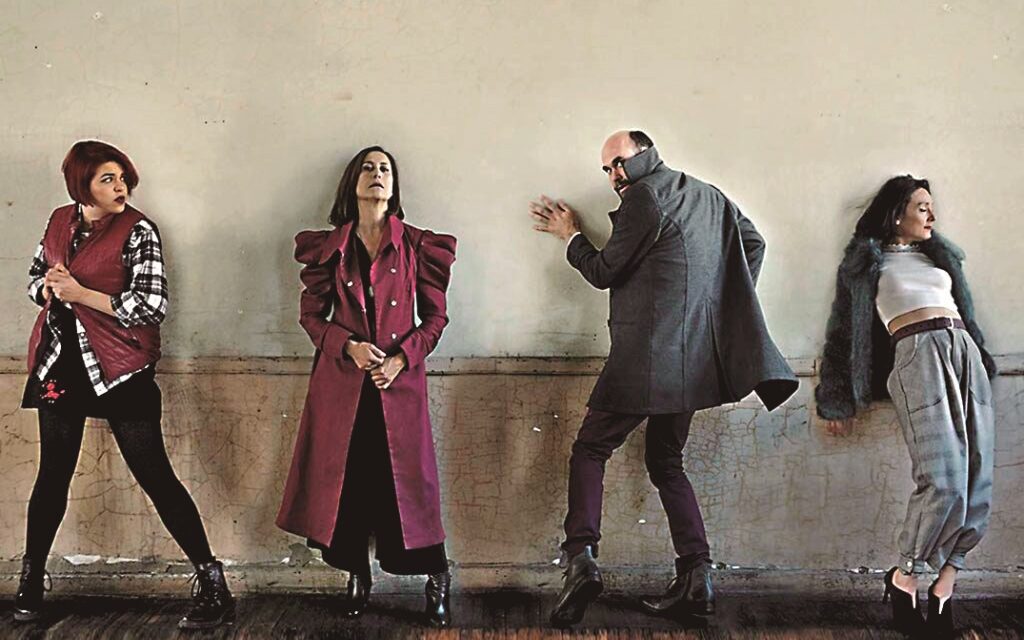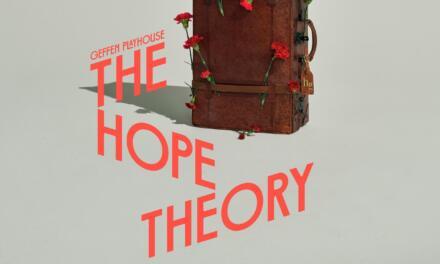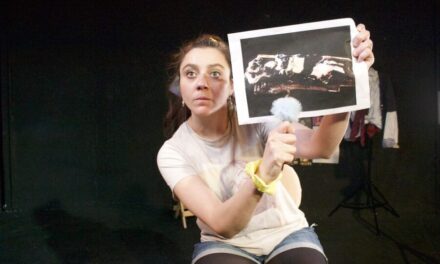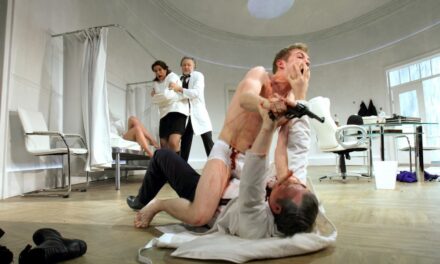Authored and directed by Bárbara Colio (Mexicali, Baja California), Casi Transilvania (Almost Transylvania) was shown at La Teatrería in Mexico City. After premiering in Lima, Peru in 2015, under the direction of Alberto Isola, Colio has brought her to play back to its country of origin.
Lumi Cavazos, of Like Water for Chocolate fame, has the leading role. She impersonates Julia, a scriptwriter married to Hugo (Tomás Rojas). He is a filmmaker who is having an affair with a mediocre actress (Sophie Alexander Katz). The fourth character is Francisca, a waitress played by Martha Mega.
Almost Transylvania dramatizes a series of asymmetrical relationships in which the characters are not always who they seem to be. Moreover, they use their individual assets to attempt to create parity with their cohorts. As the daughter of a famous actress currently vacationing in Transylvania, Julia not only writes the script but also produces her husband’s film. As a director, Hugo would seem to be in full control of his film, yet, Julia has the power to withdraw the funds, and put an end to the project. The actress, with a small role in the film, is at the mercy of both the writer and the director. However, as his lover, she attempts to negotiate a better billing. The only character who seems to have no ulterior motives is Francisca, the waitress.
The convoluted personal relationships amongst the characters are mirrored by a dramatic style that evokes a comedy of errors, a melodrama, and a thriller. Colio, however, complicates these subgenres by criticizing the creative process, by incorporating elements from other literary genres, and by playing with the concept of linear time. The play is divided into three parts—That Morning, That afternoon, and That Night—, which suggests it occurs in a single day, however, the emphasis on the word “that” makes it questionable. Also, a preamble entitled “That Night?” and a coda called “Another Morning” break with Aristotle’s unity of time.
Even though the diegetic space is occupied by only four characters as well as two German Shepherds named Frida and Gala, there are seven other non-diegetic characters who appear via telephone conversations or as voiceovers. In addition, the action occurs in various spaces: a park, Julia’s house, a coffee shop, the film location, a police station, and, indirectly, Transylvania. Despite the multiple locations, the stage props are limited to a couple of chairs, a sofa, and a park bench. Lighting, therefore, becomes a crucial element of the performance.
The implied reference to vampires in the title of the play can be associated with each of the characters who rely on others in order to exist. The director depends on his wife’s money to create his films, the actress exploits her love affair to get a role in a film, and the scriptwriter uses the lives of others to create her fiction. And even though the waitress does not consciously suck anyone’s blood to exist, her livelihood does depend on the patronage of the rest of the characters. This depiction of society as a web-like structure vindicates us critics who have traditionally been portrayed as living off the creativity of writers.
This post was written by the author in their personal capacity.The opinions expressed in this article are the author’s own and do not reflect the view of The Theatre Times, their staff or collaborators.
This post was written by Margarita Vargas.
The views expressed here belong to the author and do not necessarily reflect our views and opinions.


















